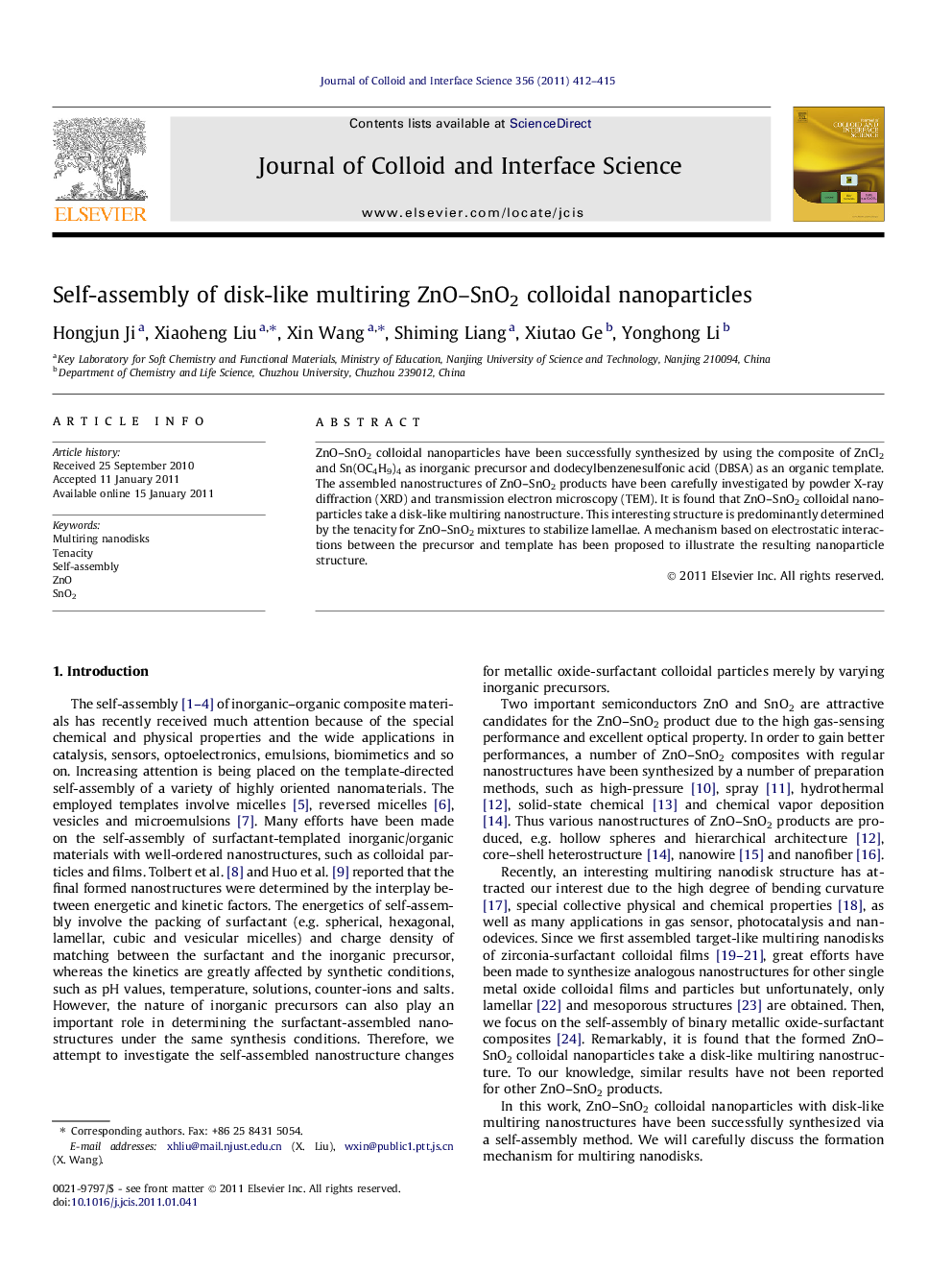| Article ID | Journal | Published Year | Pages | File Type |
|---|---|---|---|---|
| 608788 | Journal of Colloid and Interface Science | 2011 | 4 Pages |
ZnO–SnO2 colloidal nanoparticles have been successfully synthesized by using the composite of ZnCl2 and Sn(OC4H9)4 as inorganic precursor and dodecylbenzenesulfonic acid (DBSA) as an organic template. The assembled nanostructures of ZnO–SnO2 products have been carefully investigated by powder X-ray diffraction (XRD) and transmission electron microscopy (TEM). It is found that ZnO–SnO2 colloidal nanoparticles take a disk-like multiring nanostructure. This interesting structure is predominantly determined by the tenacity for ZnO–SnO2 mixtures to stabilize lamellae. A mechanism based on electrostatic interactions between the precursor and template has been proposed to illustrate the resulting nanoparticle structure.
Graphical abstractThe image shows self-assembled disk-like multiring ZnO–SnO2 (Zn/Sn = 1/1) colloidal nanoparticles.Figure optionsDownload full-size imageDownload high-quality image (236 K)Download as PowerPoint slideResearch highlights► Disk-like multiring ZnO-SnO2 colloidal nanoparticles have been self-assembled. ► The tenacity of ZnO-SnO2 ring-like lamellae determines multiring structures. ► Self-assembly is due to electrostatic interactions between (Zn-O-Sn-O)n2n+ and DBSA.
